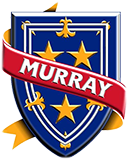Home > Public Works > Water System > Quality
Water Quality
Water Plant Supervisor - Paul Wood
The information below is contained in one PDF that was mailed in billing and is also available in hard copy in City Hall. This information will always be for the previous year.
Purpose
We are very pleased to provide you with the 2023 Annual Water Quality Report. We want to keep you informed about the quality of our water and services we have delivered to you over 2023. Our goal is to provide to you a safe and dependable supply of drinking water. We want you to understand the efforts we make to continually improve the water treatment process and protect our water resources.
We are committed to ensuring that the quality of your water remains
at the highest level and the lowest price as we meet the needs of our
community.
Our water supply comes from a ground water source and draws from six
wells located within the McNairy Formation Aquifer. Water systems in
Kentucky must test for many contaminants.
Only those contaminants that were detected are included in the test results table. For a complete listing of the tests actually conducted you may contact the water treatment plant office. Murray Water System routinely monitors for contaminants in your drinking water according to Federal and State laws. The available table shows the results of our monitoring for the period of January 1st to December 31st, 2023.
Wellhead Protection
For information on Preparing a Groundwater Protection Plan
click here.
EPA Links for topographic maps
click
here.
Murray Water System's wellhead protection plan is a nationally recognized model to determine the susceptibility of the wells to potential sources of contamination. The Murray Water System has been nominated by the Kentucky Division of Water to represent Kentucky for the EPA's Region 4 Award of Excellency.
EPA Limits
Sources of drinking water (both tap water and bottled water) include rivers, lakes, streams, ponds, reservoirs, springs, and wells. As water travels over the surface of the land or through the ground, it dissolves naturally occurring minerals and, in some cases, radioactive material, and can pick up substances resulting from the presence of animals or human activity.
Contaminants that may be present in source water include microbial
contaminants, inorganic contaminants, pesticides and herbicides, organic
chemical contaminants, and radioactive contaminants. In order to ensure
that tap water is safe to drink, EPA prescribes regulations that limit
the amount of certain contaminants in water provided by public water
systems.
Special Precautions
Some people may be more vulnerable to contaminants in drinking water than the general population. Immuno-compromised persons such as persons with cancer undergoing chemotherapy, persons who have undergone organ transplants, people with HIV/AIDS or other Immune system disorders, some elderly, and infants can be particularly at risk from infections.
These people should seek advice about drinking water from their health care providers. EPA/CDC guidelines on appropriate means to lessen the risk of infection by cryptosporidium and other microbial contaminants are available from the Safe Drinking Water Hotline (800-426-4791).
Definitions
In the test results table below you will find many terms and abbreviations you might not be familiar with. To help you better understand these terms we've provided the following definitions:
Below Detection Levels (BDL) - laboratory analysis indicates that the contaminant is not present.
Parts per million (ppm) - one part per million corresponds to one minute in two years or a single penny in $10,000.
Parts per billion (ppb) - one part per billion corresponds to one minute in 2,000 years, or a single penny in $10,000,000.
Action Level (AL) - the concentration of a contaminant which, if exceeded, triggers treatment or other requirements which a water system must follow.
Maximum Residual Disinfectant Level (MRDL) - the highest level of a disinfectant allowed in drinking water. There is convincing evidence that addition of a disinfectant is necessary for control of microbial contaminants.
Maximum Residual Disinfectant Level Goal (MRDLG) - the level of a drinking water disinfectant below which there is no known or expected risk to health. MRDLGs do not reflect the benefits of the use of disinfectants to control microbial contaminants.
Nephelometric Turbidity Unit (NTU) - a measure of the clarity of water. Turbidity is monitored because it is a good indicator of the effectiveness of the filtration system.
Not Applicable (N/A) - does not apply.
Picocuries per liter (pCi/L) - a measure of the radioactivity in water.
Treatment Technique (TT) - a treatment technique is a required intended to reduce the level of a contaminant in drinking water.
Maximum Contaminant Level - (MCL) is the highest level of a contaminant that is allowed in drinking water. MCLs are set as close to the MCLGs as feasible using the best available treatment technology.
Maximum Contaminant Level Goal - (MCLG) is the level of a contaminant in drinking water below which there is no known or expected risk to health. MCLGs allow for a margin of safety.
Thank you for allowing us to continue providing your family with clean, quality water this year. We at Murray Water Treatment Plant work diligently to provide top quality water to every tap. Our water operators are highly trained and certified by the state of Kentucky. We ask that all our customers help us protect our water resources. Please call our office at (270) 762-0345, if you have any questions.
Drinking water, including bottled water, may reasonably be expected to contain at least small amounts of some contaminants. It is important to remember that the presence of these contaminants does not necessarily pose a health risk. More information about contaminants and potential health effects can be obtained by calling the Environmental Protection Agency Safe Drinking Water Hotline at 1(800) 426-4791.












